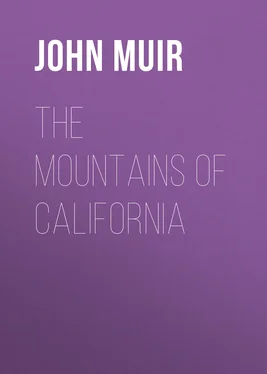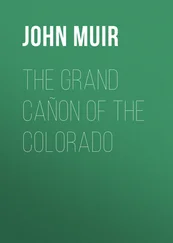John Muir - The Mountains of California
Здесь есть возможность читать онлайн «John Muir - The Mountains of California» — ознакомительный отрывок электронной книги совершенно бесплатно, а после прочтения отрывка купить полную версию. В некоторых случаях можно слушать аудио, скачать через торрент в формате fb2 и присутствует краткое содержание. Жанр: Путешествия и география, История, foreign_edu, foreign_antique, foreign_prose, на английском языке. Описание произведения, (предисловие) а так же отзывы посетителей доступны на портале библиотеки ЛибКат.
- Название:The Mountains of California
- Автор:
- Жанр:
- Год:неизвестен
- ISBN:нет данных
- Рейтинг книги:4 / 5. Голосов: 1
-
Избранное:Добавить в избранное
- Отзывы:
-
Ваша оценка:
- 80
- 1
- 2
- 3
- 4
- 5
The Mountains of California: краткое содержание, описание и аннотация
Предлагаем к чтению аннотацию, описание, краткое содержание или предисловие (зависит от того, что написал сам автор книги «The Mountains of California»). Если вы не нашли необходимую информацию о книге — напишите в комментариях, мы постараемся отыскать её.
The Mountains of California — читать онлайн ознакомительный отрывок
Ниже представлен текст книги, разбитый по страницам. Система сохранения места последней прочитанной страницы, позволяет с удобством читать онлайн бесплатно книгу «The Mountains of California», без необходимости каждый раз заново искать на чём Вы остановились. Поставьте закладку, и сможете в любой момент перейти на страницу, на которой закончили чтение.
Интервал:
Закладка:
A good bridle-path leads from Yosemite through many a grove and meadow up to the head of the cañon, a distance of about thirty miles. Here the scenery undergoes a sudden and startling condensation. Mountains, red, gray, and black, rise close at hand on the right, whitened around their bases with banks of enduring snow; on the left swells the huge red mass of Mount Gibbs, while in front the eye wanders down the shadowy cañon, and out on the warm plain of Mono, where the lake is seen gleaming like a burnished metallic disk, with clusters of lofty volcanic cones to the south of it.
When at length we enter the mountain gateway, the somber rocks seem aware of our presence, and seem to come thronging closer about us. Happily the ouzel and the old familiar robin are here to sing us welcome, and azure daisies beam with trustfulness and sympathy, enabling us to feel something of Nature's love even here, beneath the gaze of her coldest rocks.
The effect of this expressive outspokenness on the part of the cañon-rocks is greatly enhanced by the quiet aspect of the alpine meadows through which we pass just before entering the narrow gateway. The forests in which they lie, and the mountain-tops rising beyond them, seem quiet and tranquil. We catch their restful spirit, yield to the soothing influences of the sunshine, and saunter dreamily on through flowers and bees, scarce touched by a definite thought; then suddenly we find ourselves in the shadowy cañon, closeted with Nature in one of her wildest strongholds.
After the first bewildering impression begins to wear off, we perceive that it is not altogether terrible; for besides the reassuring birds and flowers we discover a chain of shining lakelets hanging down from the very summit of the pass, and linked together by a silvery stream. The highest are set in bleak, rough bowls, scantily fringed with brown and yellow sedges. Winter storms blow snow through the cañon in blinding drifts, and avalanches shoot from the heights. Then are these sparkling tarns filled and buried, leaving not a hint of their existence. In June and July they begin to blink and thaw out like sleepy eyes, the carices thrust up their short brown spikes, the daisies bloom in turn, and the most profoundly buried of them all is at length warmed and summered as if winter were only a dream.
Red Lake is the lowest of the chain, and also the largest. It seems rather dull and forbidding at first sight, lying motionless in its deep, dark bed. The cañon wall rises sheer from the water's edge on the south, but on the opposite side there is sufficient space and sunshine for a sedgy daisy garden, the center of which is brilliantly lighted with lilies, castilleias, larkspurs, and columbines, sheltered from the wind by leafy willows, and forming a most joyful outburst of plant-life keenly emphasized by the chill baldness of the onlooking cliffs.
After indulging here in a dozing, shimmering lake-rest, the happy stream sets forth again, warbling and trilling like an ouzel, ever delightfully confiding, no matter how dark the way; leaping, gliding, hither, thither, clear or foaming: manifesting the beauty of its wildness in every sound and gesture.
One of its most beautiful developments is the Diamond Cascade, situated a short distance below Red Lake. Here the tense, crystalline water is first dashed into coarse, granular spray mixed with dusty foam, and then divided into a diamond pattern by following the diagonal cleavage-joints that intersect the face of the precipice over which it pours. Viewed in front, it resembles a strip of embroidery of definite pattern, varying through the seasons with the temperature and the volume of water. Scarce a flower may be seen along its snowy border. A few bent pines look on from a distance, and small fringes of cassiope and rock-ferns are growing in fissures near the head, but these are so lowly and undemonstrative that only the attentive observer will be likely to notice them.
On the north wall of the cañon, a little below the Diamond Cascade, a glittering side stream makes its appearance, seeming to leap directly out of the sky. It first resembles a crinkled ribbon of silver hanging loosely down the wall, but grows wider as it descends, and dashes the dull rock with foam. A long rough talus curves up against this part of the cliff, overgrown with snow-pressed willows, in which the fall disappears with many an eager surge and swirl and plashing leap, finally beating its way down to its confluence with the main cañon stream.
Below this point the climate is no longer arctic. Butterflies become larger and more abundant, grasses with imposing spread of panicle wave above your shoulders, and the summery drone of the bumblebee thickens the air. The Dwarf Pine, the tree-mountaineer that climbs highest and braves the coldest blasts, is found scattered in storm-beaten clumps from the summit of the pass about half-way down the cañon. Here it is succeeded by the hardy Two-leaved Pine, which is speedily joined by the taller Yellow and Mountain Pines. These, with the burly juniper, and shimmering aspen, rapidly grow larger as the sunshine becomes richer, forming groves that block the view; or they stand more apart here and there in picturesque groups, that make beautiful and obvious harmony with the rocks and with one another. Blooming underbrush becomes abundant,—azalea, spiraea, and the brier-rose weaving fringes for the streams, and shaggy rugs to relieve the stern, unflinching rock-bosses.
Through this delightful wilderness, Cañon Creek roves without any constraining channel, throbbing and wavering; now in sunshine, now in thoughtful shade; falling, swirling, flashing from side to side in weariless exuberance of energy. A glorious milky way of cascades is thus developed, of which Bower Cascade, though one of the smallest, is perhaps the most beautiful of them all. It is situated in the lower region of the pass, just where the sunshine begins to mellow between the cold and warm climates. Here the glad creek, grown strong with tribute gathered from many a snowy fountain on the heights, sings richer strains, and becomes more human and lovable at every step. Now you may by its side find the rose and homely yarrow, and small meadows full of bees and clover. At the head of a low-browed rock, luxuriant dogwood bushes and willows arch over from bank to bank, embowering the stream with their leafy branches; and drooping plumes, kept in motion by the current, fringe the brow of the cascade in front. From this leafy covert the stream leaps out into the light in a fluted curve thick sown with sparkling crystals, and falls into a pool filled with brown boulders, out of which it creeps gray with foam-bells and disappears in a tangle of verdure like that from which it came.
Конец ознакомительного фрагмента.
Текст предоставлен ООО «ЛитРес».
Прочитайте эту книгу целиком, купив полную легальную версию на ЛитРес.
Безопасно оплатить книгу можно банковской картой Visa, MasterCard, Maestro, со счета мобильного телефона, с платежного терминала, в салоне МТС или Связной, через PayPal, WebMoney, Яндекс.Деньги, QIWI Кошелек, бонусными картами или другим удобным Вам способом.
Интервал:
Закладка:
Похожие книги на «The Mountains of California»
Представляем Вашему вниманию похожие книги на «The Mountains of California» списком для выбора. Мы отобрали схожую по названию и смыслу литературу в надежде предоставить читателям больше вариантов отыскать новые, интересные, ещё непрочитанные произведения.
Обсуждение, отзывы о книге «The Mountains of California» и просто собственные мнения читателей. Оставьте ваши комментарии, напишите, что Вы думаете о произведении, его смысле или главных героях. Укажите что конкретно понравилось, а что нет, и почему Вы так считаете.












